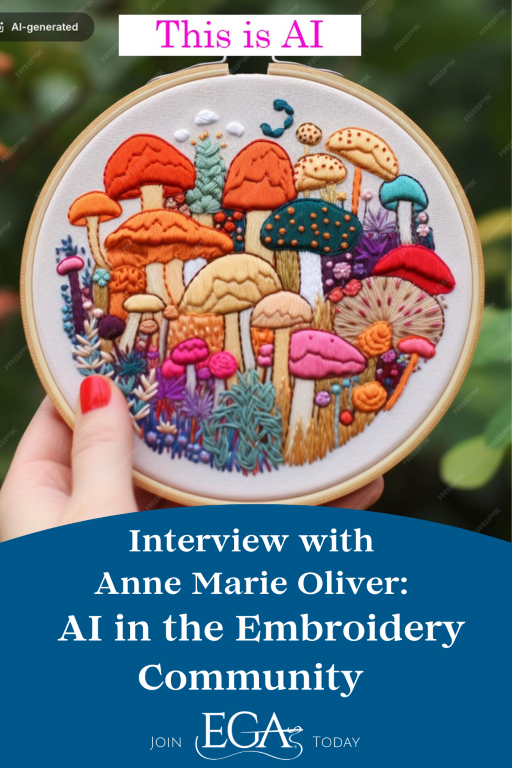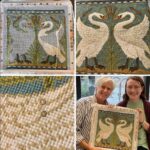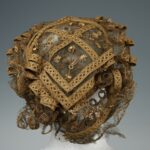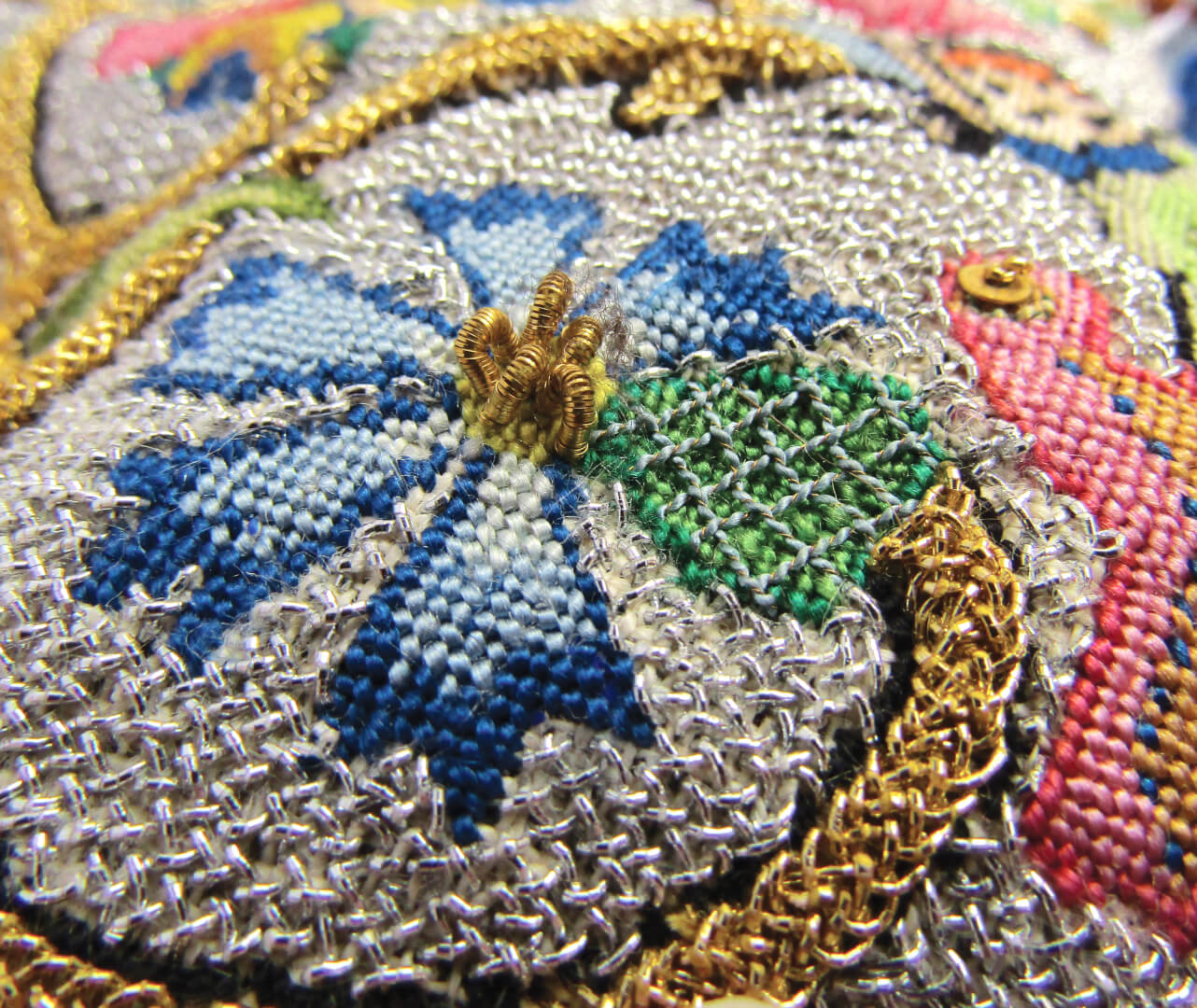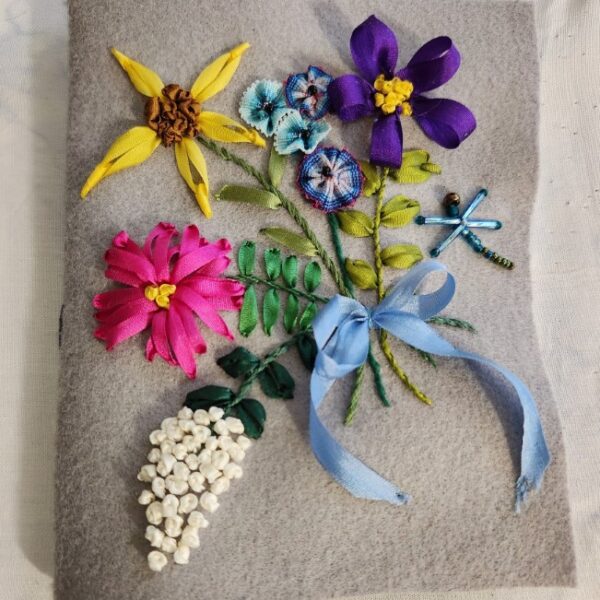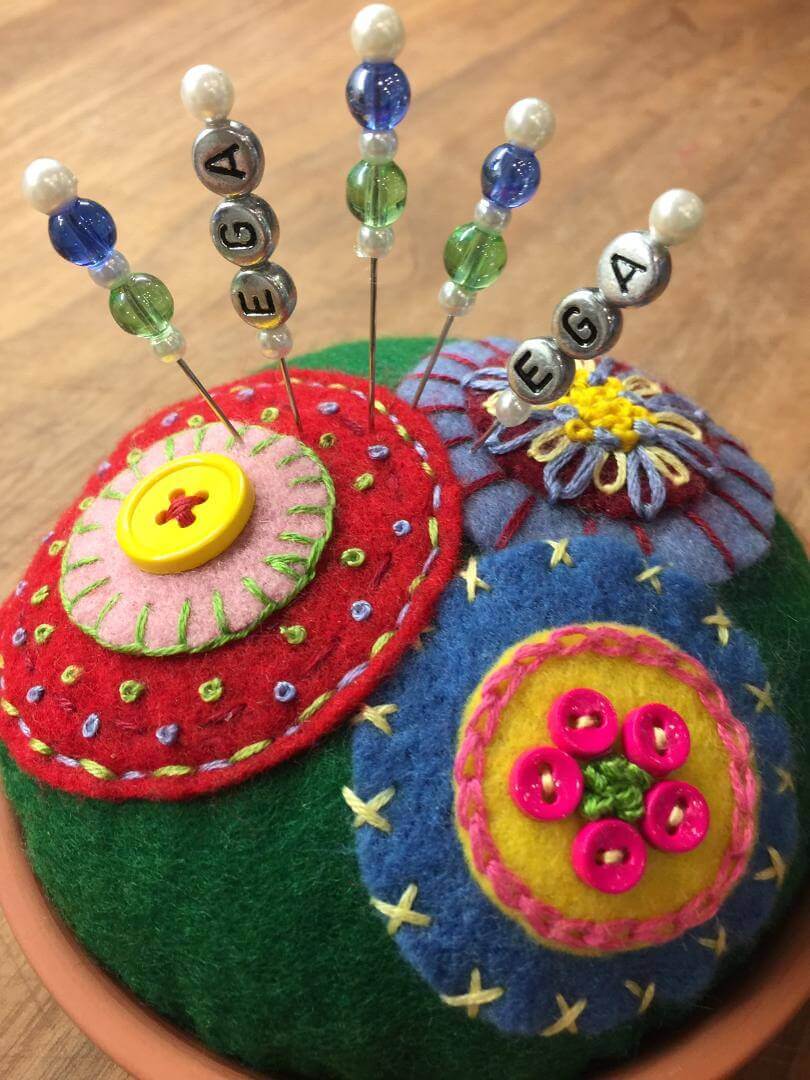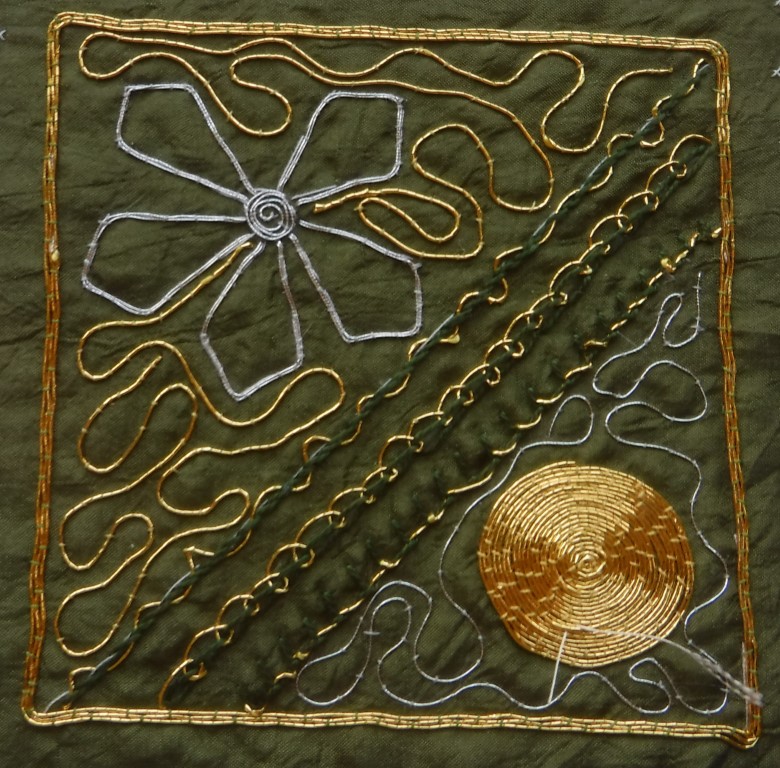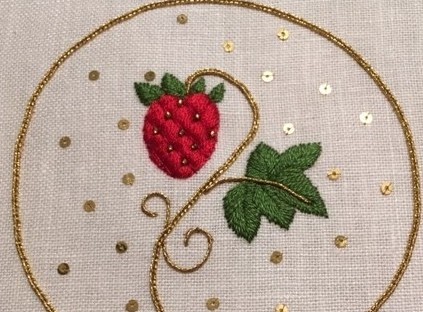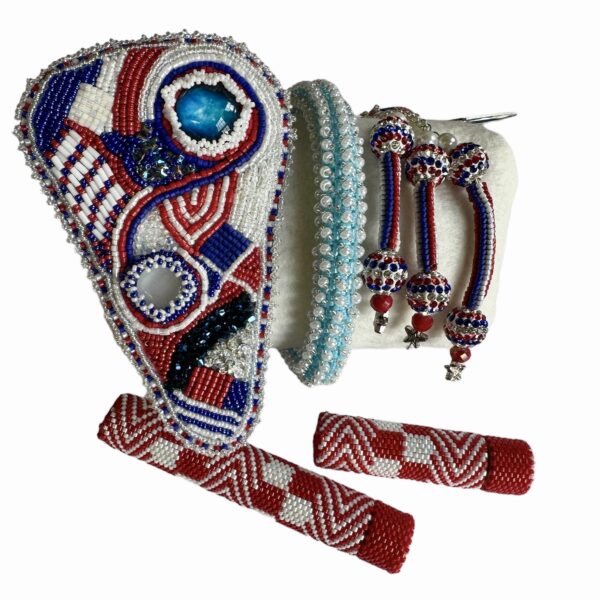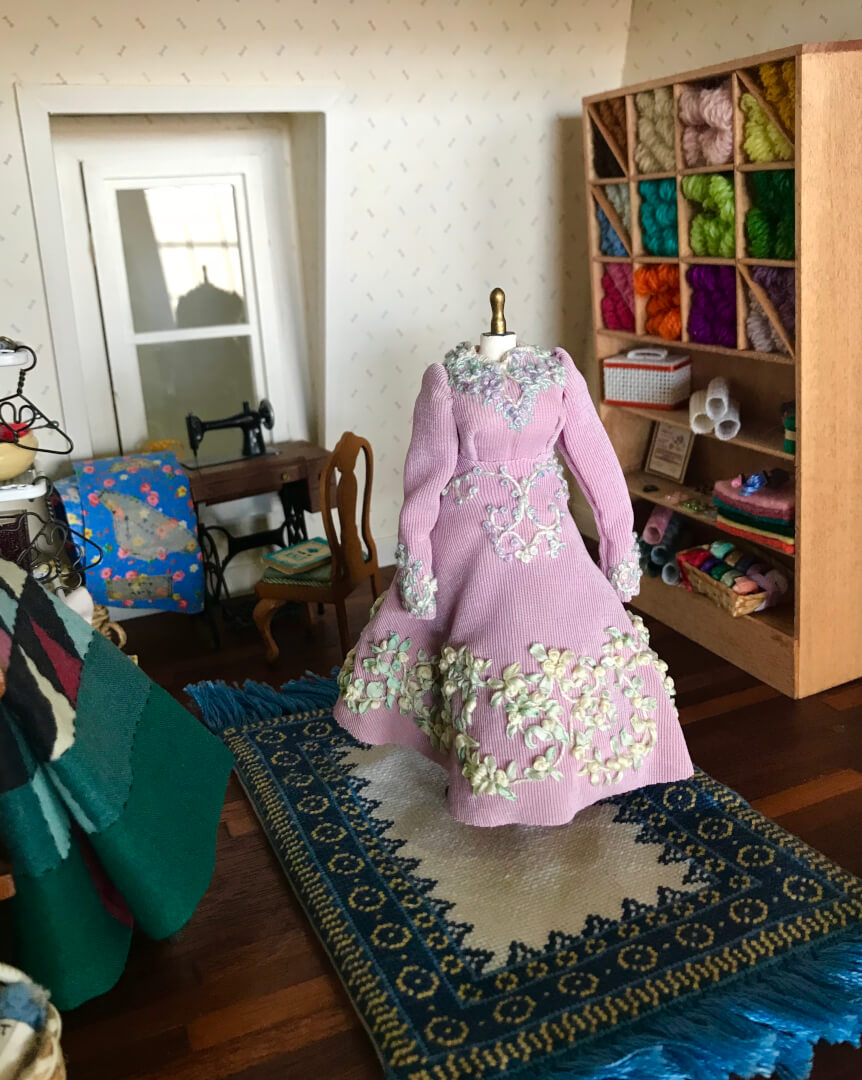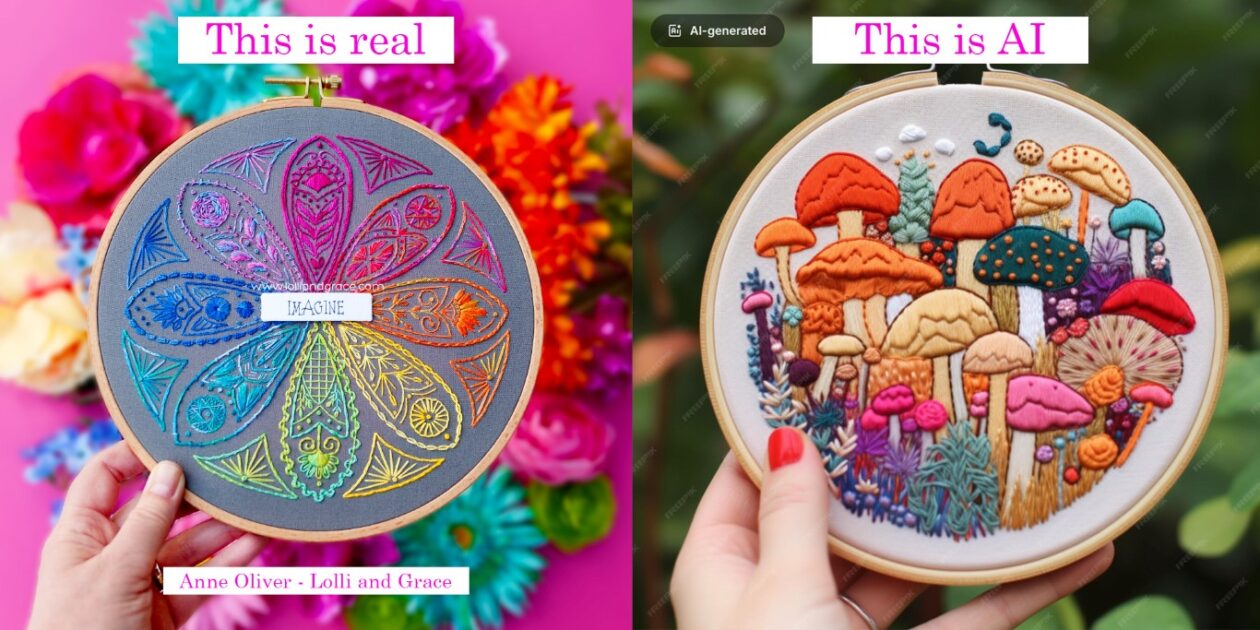
Since the advent of Artificial Intelligence technology, AI has been creeping into aspects of everyday life that may not be immediately apparent. From uncanny images to online articles, recipes, and craft instructions, the proliferation of AI-generated content should concern craft communities. In EGA’s upcoming Virtual Lecture Artificial Intelligence (AI) in the Embroidery Community, Anne Marie Oliver of Lolli and Grace addresses the problems and challenges AI raises for embroiderers. We sat down with Anne Marie ahead of her lecture to learn more about the issue and offer further insight and advice for EGA’s community.
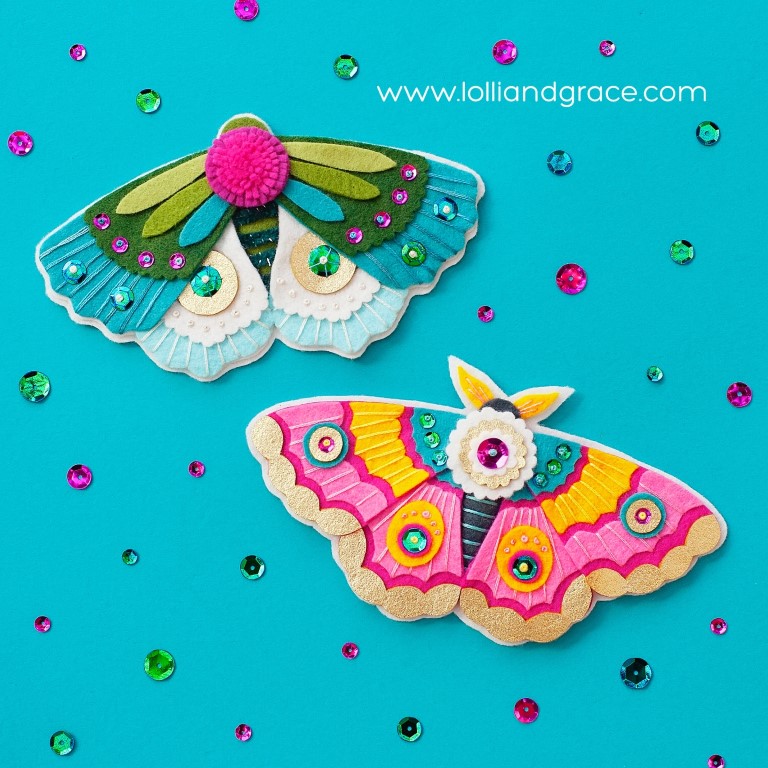
How were you introduced to embroidery? Where did your passion for embroidery and needlework begin?
I always say that I’ve been doing something creative or crafty my whole life. I can vividly remember the first “craft” I did in preschool (my mom saved it, bless her, and I have it now), and I spent much of my younger years drawing all day, every day. (So. Many. Horses!) When I was in Jr. High school I taught myself needlepoint, because there was the coolest needlepoint shop in the most amazing mall ever (Olla Podrida in Dallas, if anyone happens to be familiar with that). I can still see their wall of colorful yarn in my mind even now.
When I was in college I started cross stitching (it was the 80s, after all), and then after college I worked for a really fun specialty arts & craft shop, creating samples to sell painted shirts, jewelry, and pretty much any craft for which we sold the supplies. Somewhere in there I tried to learn embroidery, and I was, to put it mildly, not successful. More like, I was awful! I promptly put my first attempt in a drawer and forgot about it. (Funny story – a few years ago I unearthed those first stitches. Let’s just say I’m glad I didn’t let that disappointing start permanently dissuade me, but it was a while before I even wanted to try again.)
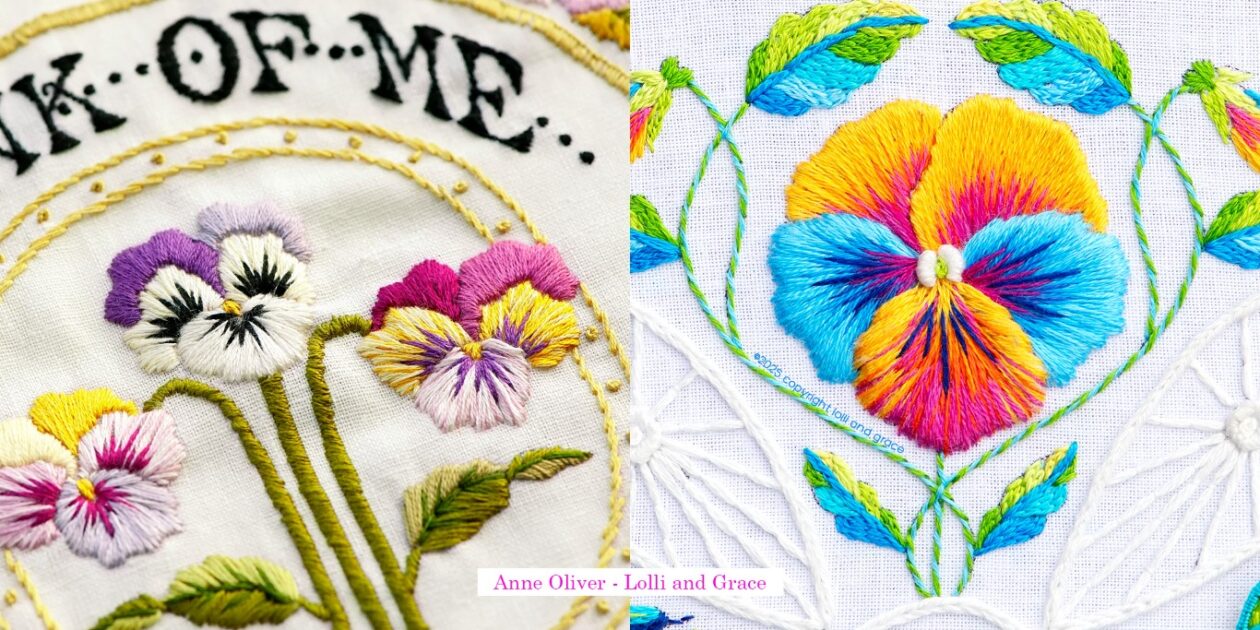
But after years of painting (clothing, furniture, murals, watercolors) I saw an embroidery project in Martha Stewart magazine with the prettiest pansies, and I had the undeniable urge to try embroidery again. Success! The lovely design and detailed instructions, along with gorgeous professional photos, helped me make something of which I was quite proud. All of this proved to be quite important, because as I create my own designs now for other people to stitch, I know how critical all of those elements are to helping someone stitch a design and feel successful at it.
In fact, I just had a full-circle moment. My latest design (shown above and below) features a pansy, similar to the piece that got me back to embroidery, albeit in my favorite bright color palette.
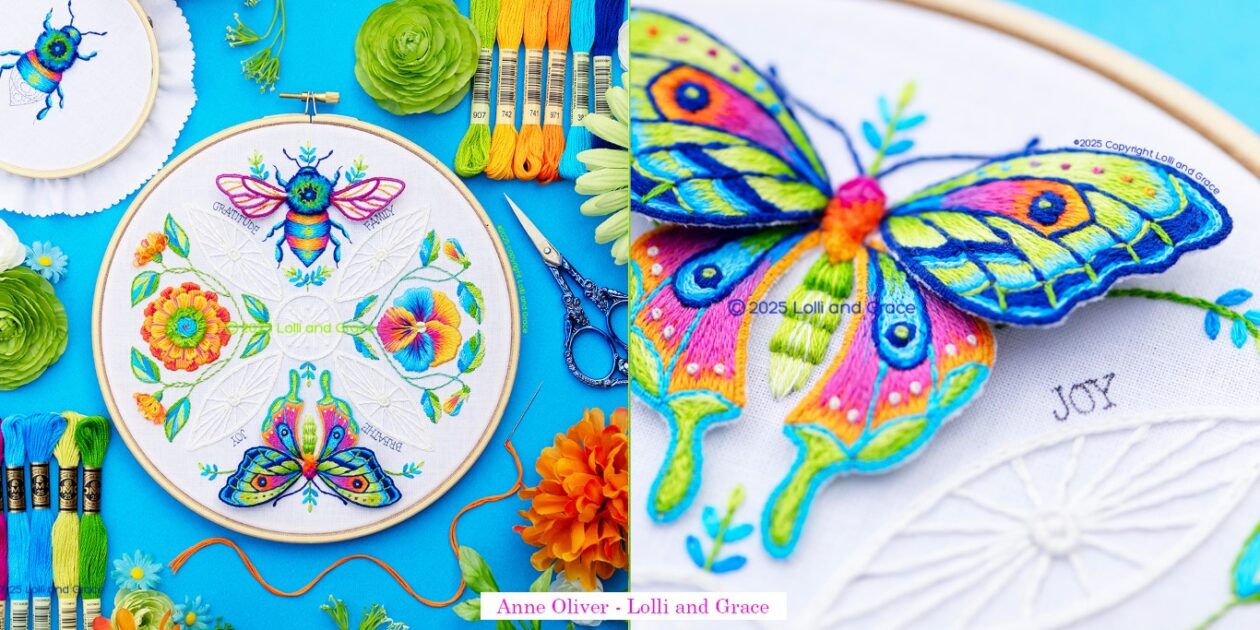
Your company Lolli & Grace offers embroidery and wool felt kits, patterns, needlework tools, and educational content to the needlework community. What inspired you to launch Lolli & Grace?
Even though that Martha Stewart pansy design was a turning point, it was a while before I came back to embroidery as a way to design patterns and kits. I became interested in doll making, and one day I was struck with the thought (pretty much out of the blue), “I think I want to make something out of wool felt and embroidery.”
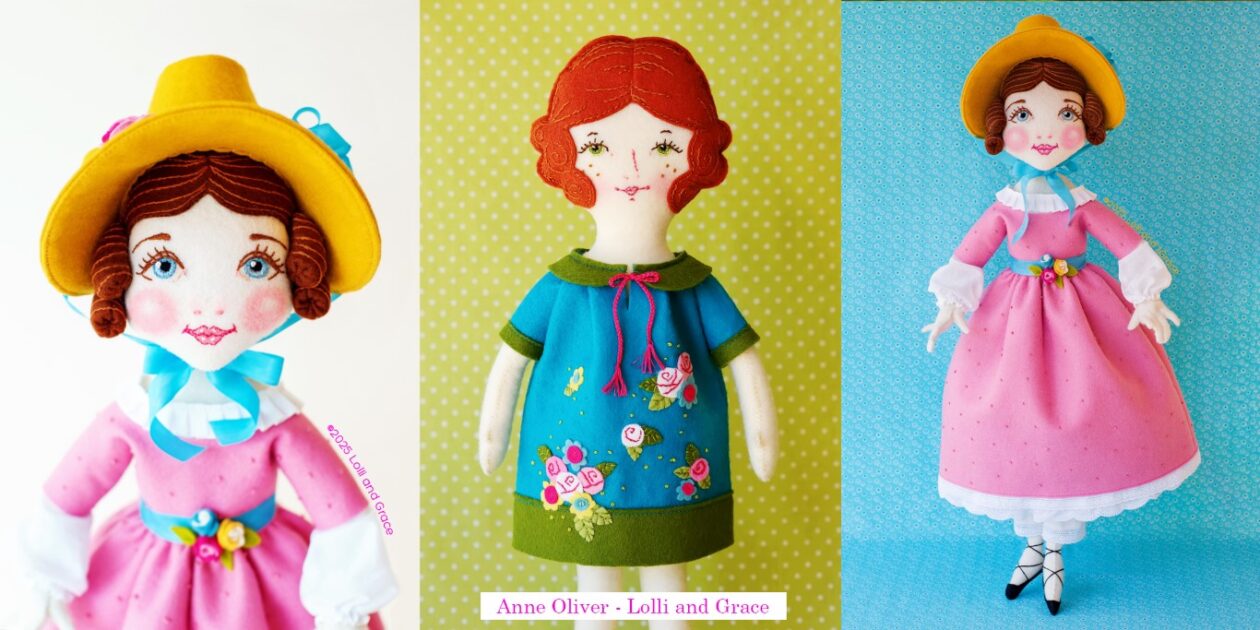
I created several wool felt doll patterns, and while I loved the process of creating them, they take a very long time to design and stitch, and I wanted something that I could make in a shorter amount of time. Embroidery patterns were the answer! So I changed my business name from Lolli Dolls to Lolli and Grace and turned my attention to embroidery designs. The doll patterns are still available, and I’m always happy when someone wants to make one.
The desire to make something with wool felt also stuck around, because in addition to my embroidery patterns/kits, I really enjoy designing wool felt ornaments throughout the year.
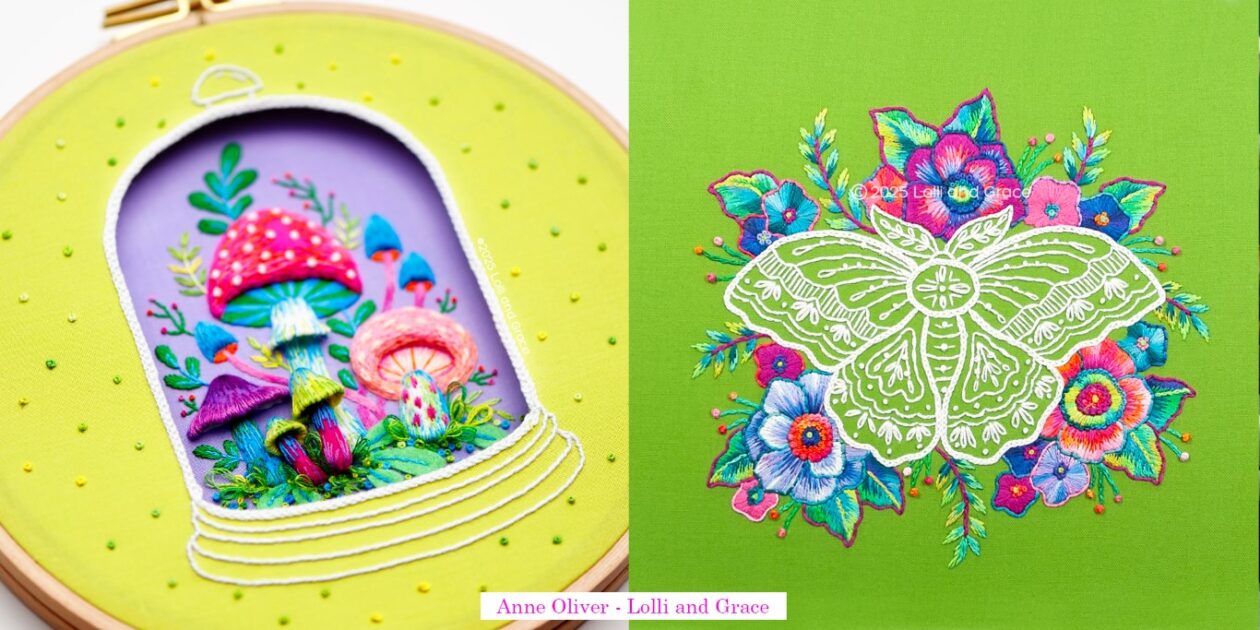
You wrote a very reasoned article about Artificial Intelligence in the Embroidery Community. Was there a particular incident that inspired you to write that article?
I spend some time each day in several different FB groups, and I started seeing more and more posts in those groups (and random “embroidery” pages that show up on my feed) where AI “embroidery” images were becoming more frequent. As I read the comments on these “photos,” I noticed a trend – even though it was obvious to me they were not real, so many people—sometimes HUNDREDS of people—were all saying, “That’s so pretty!” or “I love it!” Even worse, inevitably there were questions like, “How do I make this?” Of course the “designers” could never answer this question, because they didn’t actually make it themselves. They spent all of 2 minutes putting a prompt into a computer app and had the “design” pop up for them, fully formed and ready to sell.
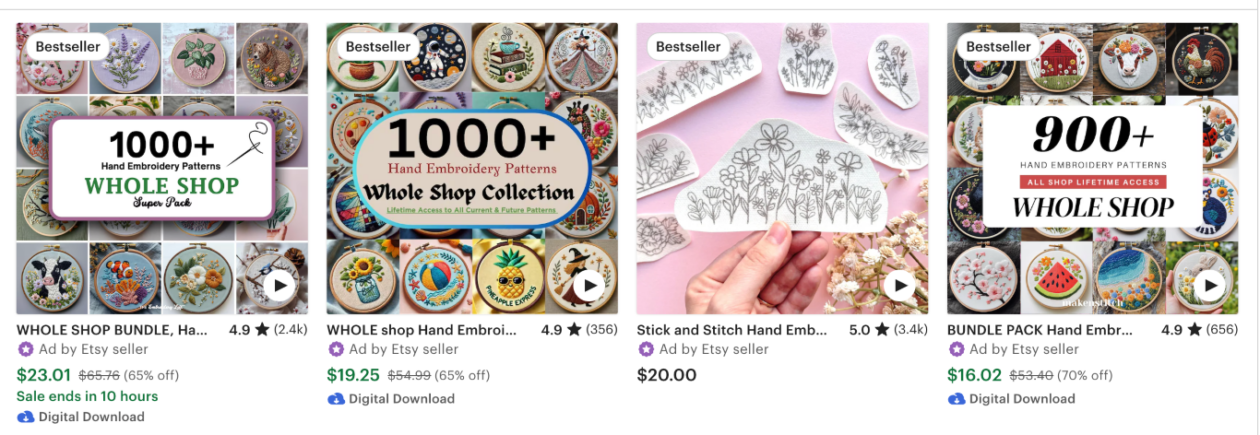
And, in addition to my own website, I also maintain a shop on Etsy. When I would perform a search for “embroidery patterns,” I noticed that more and more AI pattern mills (shops that are filled with nothing but AI-generated designs) were taking up space on the first several pages.
When I would try to tell people in my FB groups that the “pattern” they purchased was created with AI, people continually said they A.) didn’t know what AI was, or B.) didn’t know how to tell an AI pattern from a real one. Finally, I got fed up with the lack of knowledge about AI and felt there was a real need to inform people how it was negatively affecting the embroidery community in general. The article was my way to get that message out to a larger group of people.
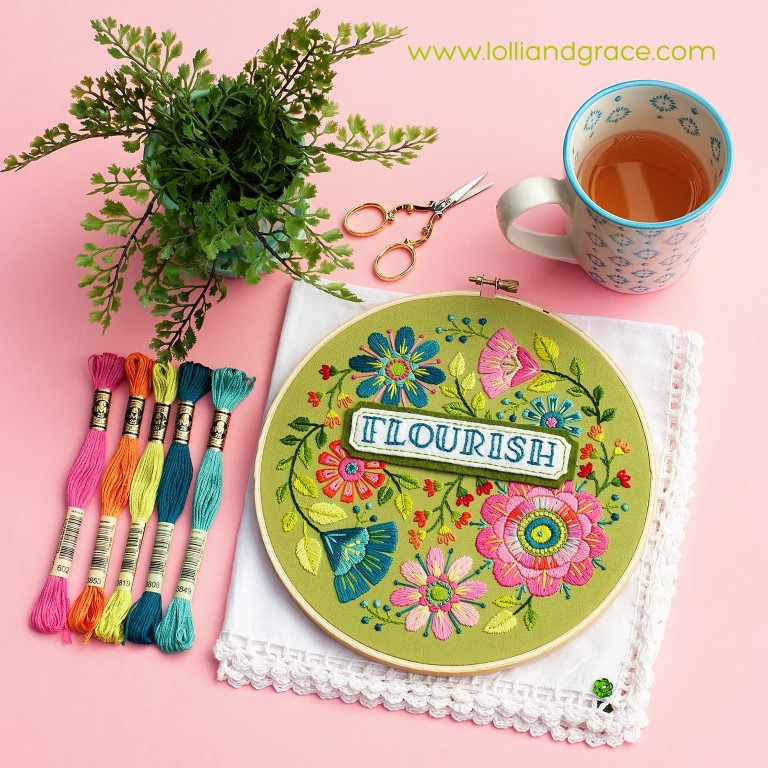
How has Artificial Intelligence impacted the embroidery community?
The frightening increase in the presence of AI “embroidery” images is most definitely affecting our stitching community, but the main impacts are these:
• People are purchasing AI “patterns” thinking that they will be able to recreate what they see in the “photos.” AI “embroidery” is not real, and often shows a finished design that literally can’t be stitched. It is unethical for these sellers to make money on a “pattern” that no one can actually make.
• Even if an AI design could, perhaps, be recreated, when stitchers who want to learn embroidery or stitch that design purchase these “patterns” and discover (after they’ve paid for it) that there are no instructions, support, or help from the “creator,” it can be discouraging. They are left completely on their own to “figure it out.” I don’t like to think of all the enthusiastic new stitchers that just wanted to learn a new skill and gave up because they were basically scammed.

• Even worse, stitchers see these “perfect” (but unattainable) finished versions, and feel completely inadequate. Over and over I’ve seen both new stitchers and experienced stitchers say, “Mine will never look that good,” or “I’m not good enough to get my stitching to look so perfect.” How many then decided, “I’m just not good at this…I don’t want to continue because mine looks so bad.”
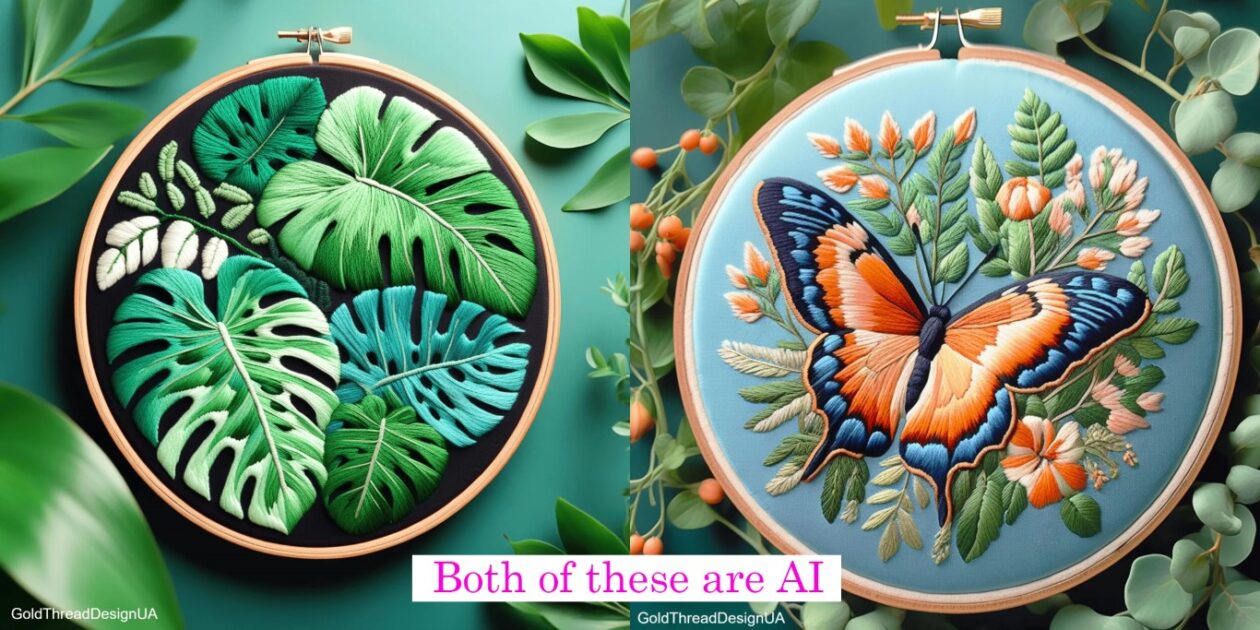
• Another big impact is how AI affects designers and sellers. Remember when I mentioned that so much space on Etsy is now occupied by AI pattern mills? Real designers have their listings pushed further and further down where no one sees them. The super-cheap pricing also hurts legitimate designers. 1000+ patterns for $23.00? That listing is literally on Etsy right now. Individual patterns are as low as $1.75. Shoppers are of course going to be more inclined to buy the pattern for $1.75 than the pattern that costs $9.99. The difference, of course, is that the $1.75 pattern includes one thing – the black and white line drawing with no instructions, and the $9.99 pattern has multiple pages of instructions, color guides, photos, diagrams, and possibly even video tutorials, along with the support and direct help from the designer if the stitcher has any questions. But shoppers see that cheap price and buy it first, and the price of the more expensive pattern now seems unreasonable to them in comparison.
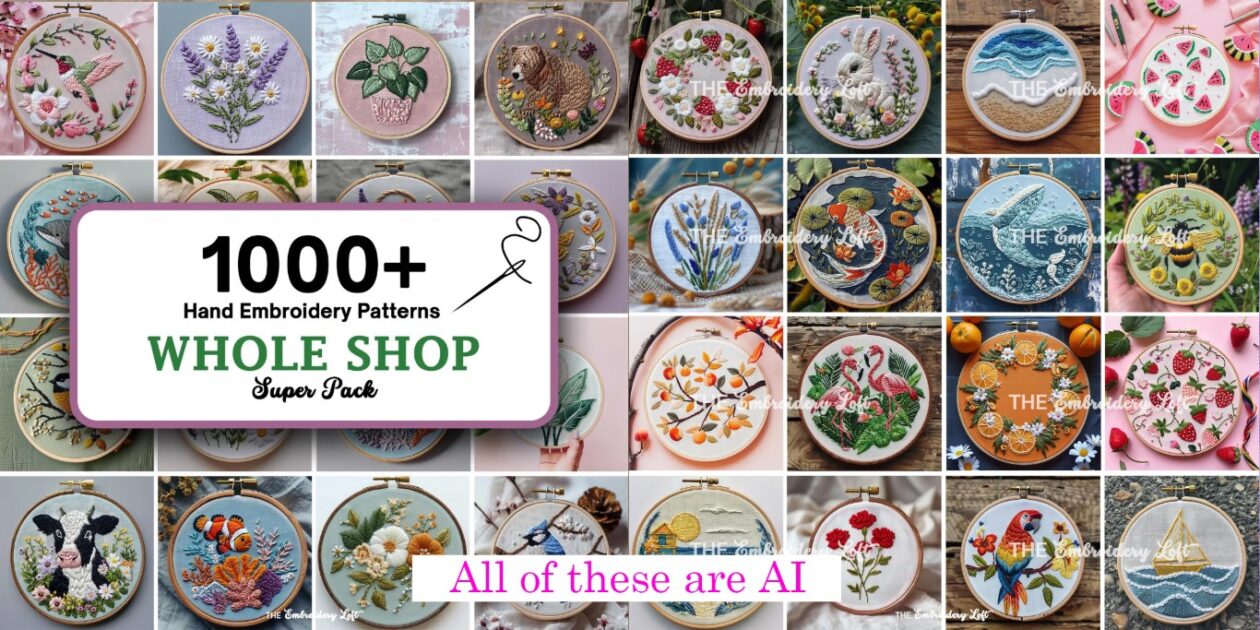
Why should the needle arts community be concerned about AI images? Aside from potentially purchasing a pattern or kit that is impossible to make, why are AI embroidery designs and kits a danger to our community?
Along with everything mentioned above, AI is flooding all the spaces where embroidery exists. Even in the 5-6 months since I wrote my AI article, I see it showing up more and more in my embroidery groups or in my embroidery social media spaces. This onslaught of seemingly “perfect embroidery” images means that over time what is considered “good” embroidery (or “well-crafted” or “beautiful” stitching) gets distorted, so that real embroidery, with its texture and fuzziness and hand-crafted imperfections, begins to seem sub-par.
When people are educated about AI, learn how to identify it, and understand all of the negative impacts it has, they can push back on it. But sometimes it feels like you’re just putting your finger in the dam that is about to burst, and AI will be the norm everywhere, and no “real” art of any kind will be available to us anymore.
In a larger sense, there are massive ethical issues with AI in general, including increased water and energy usage, among other things, the most concerning of which is how AI scrapes the internet for works of art that already exist as the basis for what it “creates.” The debate about copyrights vs. AI has been raging since AI first showed up and is ongoing today.
What is your best piece of advice for embroiderers concerned about AI embroidery kits and patterns?
There are two main ways embroiderers can empower themselves:
• Learn how to identify AI-created images, and not just for embroidery. AI is being used to fraudulently sell people all sorts of things that don’t actually exist, from sewing machines and home decor to recipes and clothing—almost anything you can think of.
• Spread the word about why it’s better to avoid AI patterns, and the effect it is having on legitimate designers. Find the designers that you know are real and that provide high-quality patterns and kits, and then share those recommendations if someone asks.
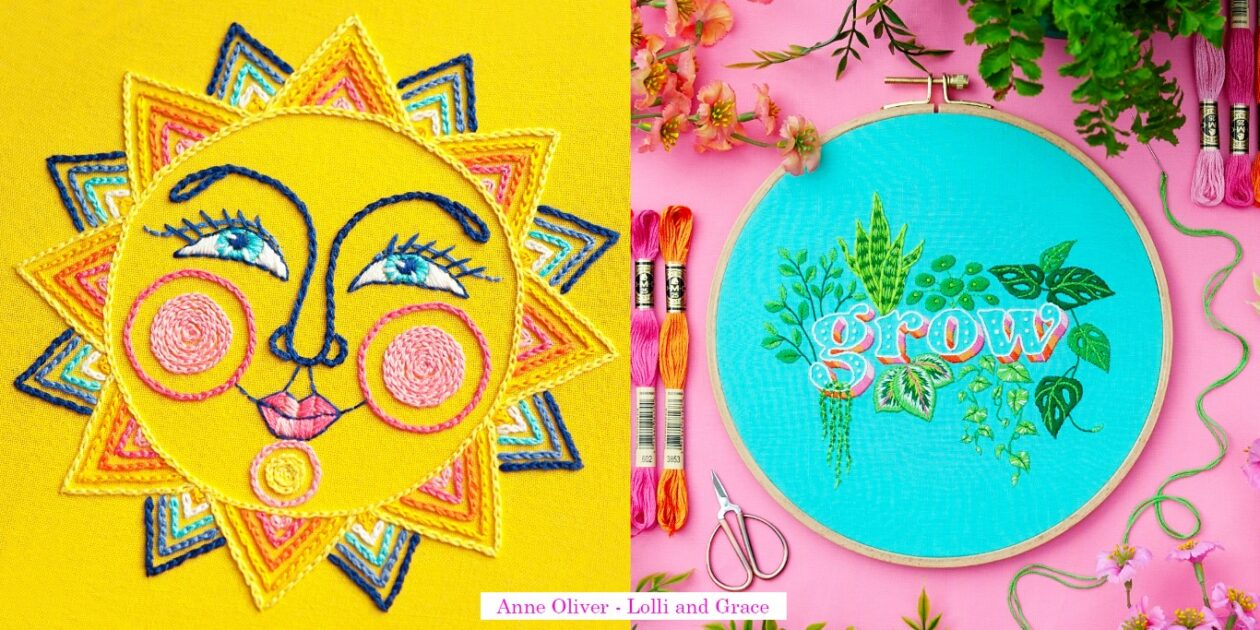
Is there any recourse for an embroiderer who sees an AI pattern they like? Can we reasonably translate an AI pattern design into something real?
Some AI “designs” could reasonably be recreated, as long as the stitcher is confident enough or experienced enough to decide on their own which stitches would match what is shown in the AI “photo.” Beyond that, it is up to the stitcher to decide how comfortable they are with the ethical considerations of AI usage on a larger scale.

Have you seen any AI embroidery designs that look like they’re trying to emulate your designs or other designer’s work?
While I haven’t seen AI embroidery designs that specifically copy any of my designs (or designers with whom I am familiar), I have had people tell me they thought photos of my work were AI. I am not offended by this, actually. AI “embroidery” images commonly employ photography techniques that have been around forever, such as a shallow depth of field (where the foreground is in focus but the background is soft and blurry), dramatic lighting (lots of deep shadows for contrast), and natural lighting effects (as if there was bright daylight shining in from a nearby window). I was a photographer for many years, and I work hard to use those traditional techniques on photos of my embroidery designs.
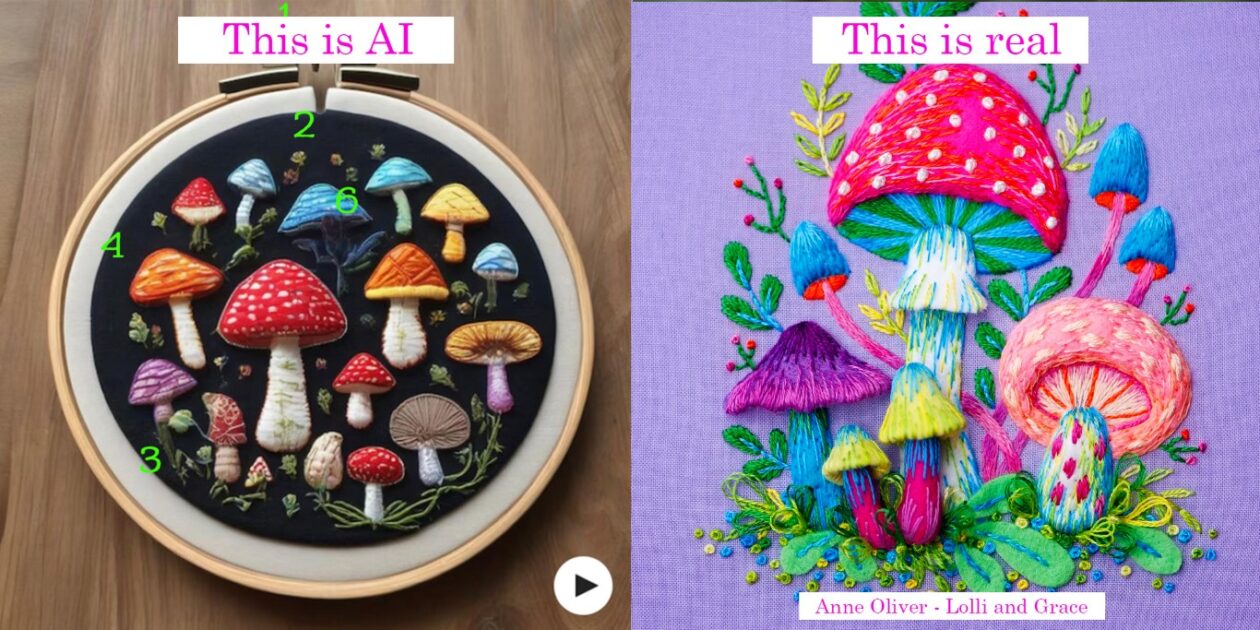
Is there anything positive to take from the phenomenon of AI in embroidery?
That’s a tough one for me to answer, because I do not like the scary influx of AI taking over the embroidery community (and every other creative community). Some people who want to create their own designs but feel they aren’t artistic say they use AI as a way to make their ideas a reality.
Let’s move away from AI for a moment to honor some of the fantastic embroidery artists and designers new embroiderers can turn to for patterns and kits. Aside from the beautiful kits and patterns at Lolli & Grace, which makers offer patterns and kits that beginners to embroidery might enjoy?
Part of my love of embroidery stems from the talented community of stitchers and designers I’ve gotten to know. Here are just a few of my favorite designers:
• Tamara Carlier (The Hoop In Hand)
• Mollie Johanson (molliejohanson.com)
• Laura McGarrity (@a_warm_garlic_yurt)
• Laney Boyd (@thistles.and.thread)
• Jenny Bolhofner (@Oliver This Felt)
• Hilary Leslie (@HLeslieDesign)
• Visa Prokofjeva (@vikasspace)
• Megan Zaniewski (@megembroiders)
• Debbie Hodge (Stitched Stories)
• Stella Caraman (Why Knot Stitches)
• Bettina Csolkovits (zeebam.com)
• Mackenzie Savage (im_hanging_by_a_thread)
• Jessica Devin (JDevin Embroidery)
